Large Churches and Mission Centers | Nazarene Presence in the Texas Triangle Megaregion (1905-2017)7/27/2018 I decided to tie these two infographs together since there is not much difference between the two slides. Key information from each of them: There is only one church over 1,000 in attendance in the entire megaregion (Bethany OK First). There three churches over 600 in attendance. For every 100 people in a Nazarene church on a Sunday morning in the Texas Triangle megaregion, thirteen of them are in these four churches. Two of them are in Oklahoma City and one is in Houston. The two in Oklahoma City are over 100 years old. Let's look at the an expanded view of sizeable congregations. I usually look at churches over 600 but since there are only four that fit this criterion, and I already looked at them in the previous infograph, I opened up the criteria to include the 16 total churches with more than 250 in attendance. That's right, sixteen churches have over 250 on Sunday in the Texas Triangle megaregion. For every 100 Nazarene attenders in church on Sunday morning in the Texas Triangle, 28 of them are in one of these sixteen congregations. Nine of these churches are in Oklahoma; seven are in Texas. Of the 331 churches reporting attendance, four out of 10 have less than 45 in attendance on a Sunday morning. Average attendance is around 80; median attendance is 49 among all churches reporting attendance. Dallas, Texas is the geographic crossroads of the Texas Triangle megaregion.  Resources
0 Comments
Just another straight forward infograph. There are sixteen female pastors, or 5% of the total number fo 318 assigned pastors in the Texas Triangle Megaregion. Three-fourths of the female pastors have served eight or fewer years. Median attendance at a church with a female pastor is 45; overall, the median average attendance with an assigned pastor regardless of gender is 54. One key piece of information from this megaregion, though, is that more than half of the female pastors (9 of 16) serve an ethnic church. Resources: Much of this infograph is pretty straightforward. There are a few interesting morsels, however. Sixteen churches reported zero attendance: eight of them have an assigned pastor. Add in the 45 churches reporting at least one person in attendance but less than twenty total, and only four churches are dual charges (one pastor for two churches). 38 churches or about 10% do not have an assigned pastor. Seventy percent (70%) of churches have an assigned pastor and an reported average attendance of less than 75 for worship. Median attendance at a church with an assigned pastor is 54. What does this say about the sustainability over the long term for paying a pastor/family a viable living wage? I've heard some say that 45 in attendance is enough to support a pastor. As a former bivocational pastor of a church that size, I know there was a choice between a full-time pastor or a decent facility. I would put the viability of a full-time ministry at a church around at least 75 in attendance. There are 122 churches that fit this category--that's only one-third of the churches in this megaregion. In one of the fastest growing populations in North America. This. Is. Sobering. Half of the assigned pastors have been at their churches since 2011. Thirteen of the sixteen female pastors have been in place since 2009. Thirty percent of pastors have been in place for less than four years. I will probably say this again, but this megaregion is one of the fasting growing populations in North America. We have 318 pastors in 346 active congregations. To reach 25 million people. The harvest, as Jesus said, is plentiful, but the workers are few. That's one senior pastor per 78,616 people in this megaregion. NOTE: This research only includes the assigned pastor as the senior pastor, and does not include paid or volunteer staff/associate pastors. Resources: Of the 346 active Nazarene churches in the Texas Triangle megaregion, 110 are ethnic churches ( 32%). Ten percent of ethnic churches on this megaregion have female pastors, and 17% do not have an assigned pastor. 15.5% of the total Nazarene membership in the Texas Triangle is found in ethnic churches. (7,948 total members at ethnic churches). Hispanic churches comprise 66% of the ethnic churches on the megaregion (73 out of 110). Eighty-two of the ethnic churches are located in Texas (75%). One-fourth of ethic churches have more than 75 attendees on average.  Resources:The data for the Texas Triangle megaregion shows correlations to the others I've researched so far: About a quarter of church closings happened within two years, about half of them closed within seven years, and seventy percent closed by year twelve. See my blog post on church closings on the Northeast Megaregion and Southern California Megaregion as examples. Surprising data that are unique to this megaregion are the sheer number of churches that were active for over 50 years prior to closing (46 of them) -- that's 11% of the total number of churches closed. The 2000s were a time of major closings and the same trends is in place for the current decade. Thirty-eight percent (38%) of churches closed after 2000 with seven years of double digit closings. The years prior to 2000 in which more than 10 churches closed were 1910 and 1918. UPDATE: Jeff Folks asked a good question on Facebook. Here is the table showing the churches organized, started, total organized/started, closed within decade, closed from this decade, and still active. There is one notable trend: a huge slice (25%) of the churches closed were designated as ethnic churches. Ninety-eight (98) of the 394 closings were ethnic churches. Sixty churches were Hispanic, thirteen were Black, seven were Korean, six were Native American and the balance were labeled Filipino, Jewish and Multicultural. Three out of four ethnic churches that were closed were located in Texas (74 out of 98). Two-thirds (67) of closed ethnic churches were shuttered since 2000. There is an interesting correlation among all churches closed in this megaregion (and in the others in this study so far) in that about a quarter of closed ethnic churches (23%) closed in two years, 61% closed within seven years, and 72% closed within twelve years. Thirteen (27%) of the closed ethnic churches closed after more than twenty years of active ministry. Of the 151 churches closed between 2000-2017, sixty-seven (44%) were ethnic churches. Again, the percentages hold true for years two, seven and twelve. Of the sixty-seven ethnic churches closed since 2000: Closed within two years: two years : 17 (25%) Closed within seven years: 41 (61%) -- a little higher than the 50% we've seen elsewhere Closed within twelve years: 47 (70%) Twenty ethnic churches were closed with at least 13 years to at most 68 years of active ministry. 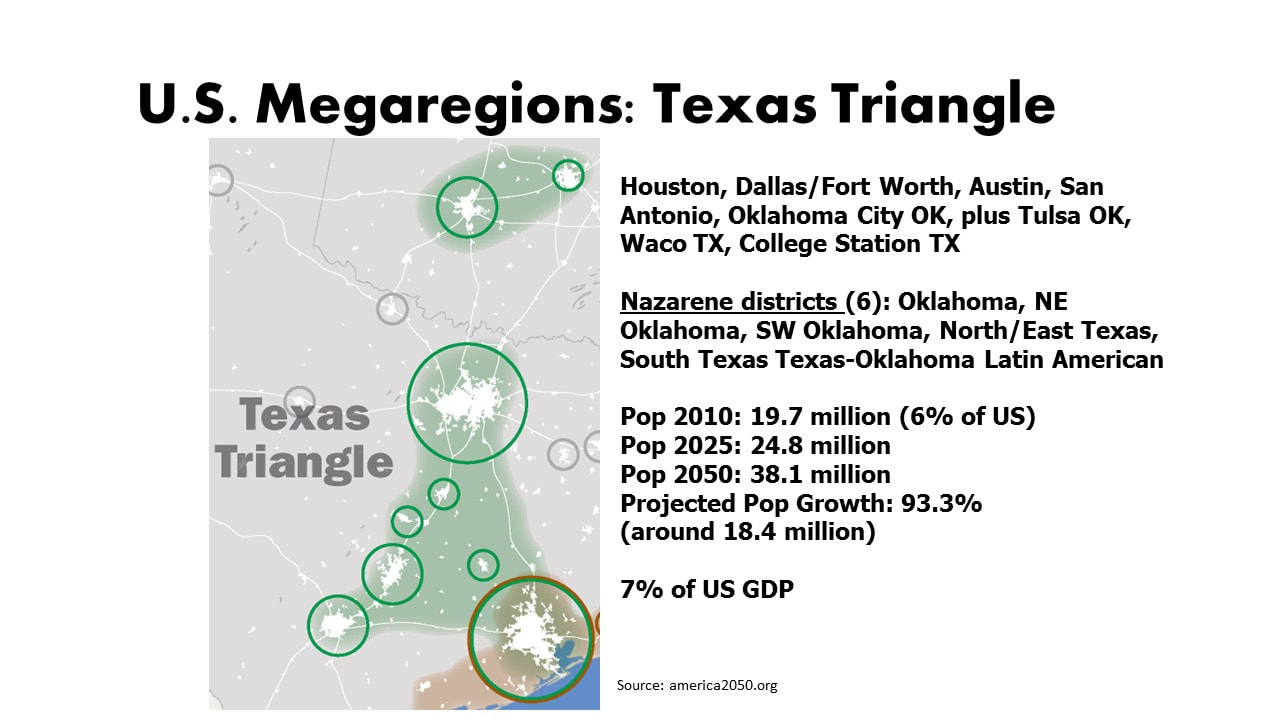 ResourcesAccording to CityMajors.com, due to demographic shifts southward in the continental United States, four of the top sixteen largest cities in the United States are found in the Texas Triangle megaregion: Houston (4), San Antonio (7), Dallas (9), Austin (11), and Fort Worth (16). The Church of the Nazarene recognizes Pilot Point, Texas, around 50 miles north of Dallas, as its birthplace, where there was a unifying of nationwide efforts among several holiness groups into a formalized movement in October 1908. The long history among Nazarenes also makes it very difficult to trace the location of the Church of the Nazarene in the present-day megaregion. Nazarenes track local church data and generates missional strategy through the administrative unit of a "district," roughly equivalent to a synod or diocese. Not being from Oklahoma, I have absolutely no idea why or how Oklahoma or even churches within the environs of Oklahoma City can be miles apart but on one of three districts (or is it four? I've lost track, honestly). The confusing array of administrative units becomes clear when viewing this geographic area through the perspective of a megaregion, which simply represents where people live and how far they are willing to commute for work: It's a "pocket of people," as Neil Cole would say. But, because I'm Nazarene, we'll take a peek at our crazy way of doing it. But, we're not the only ones, apparently America2050 includes Houston in two different megaregions, so how we look at the data will need to be clarified. Let's not forget the important fact above: |
Bio
teacher, writer, Archives
August 2022
Categories
All
|
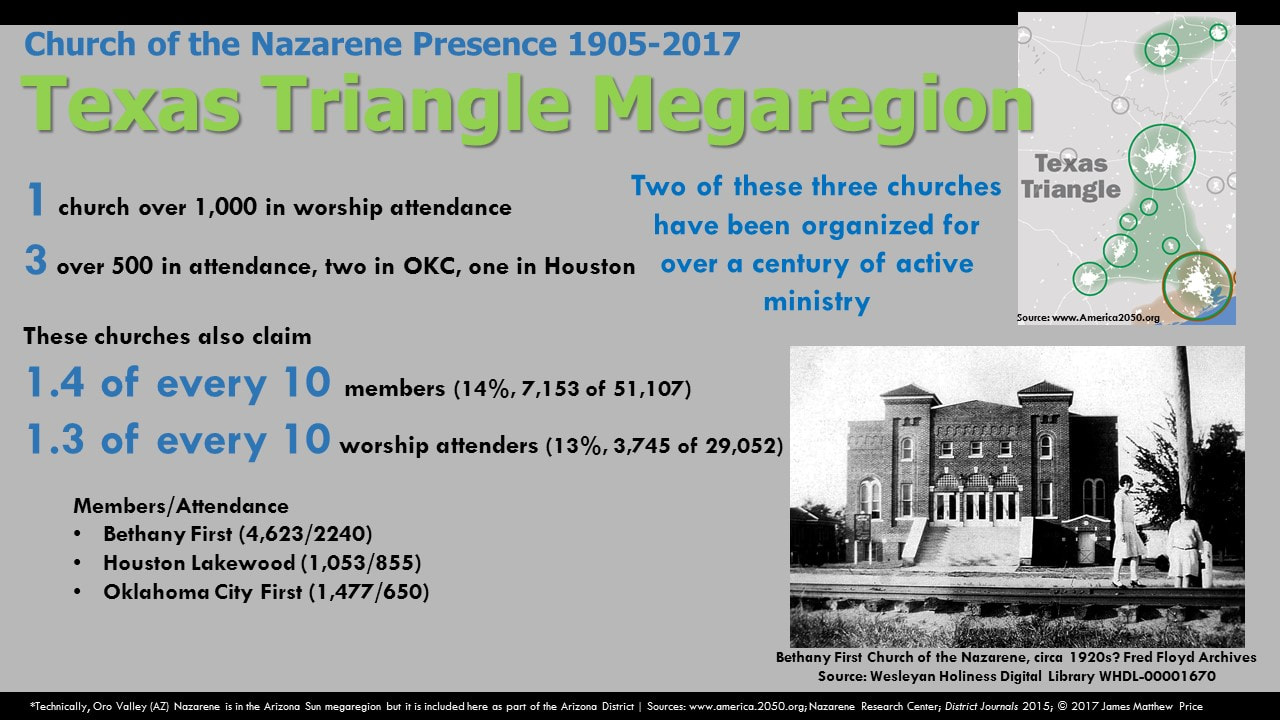
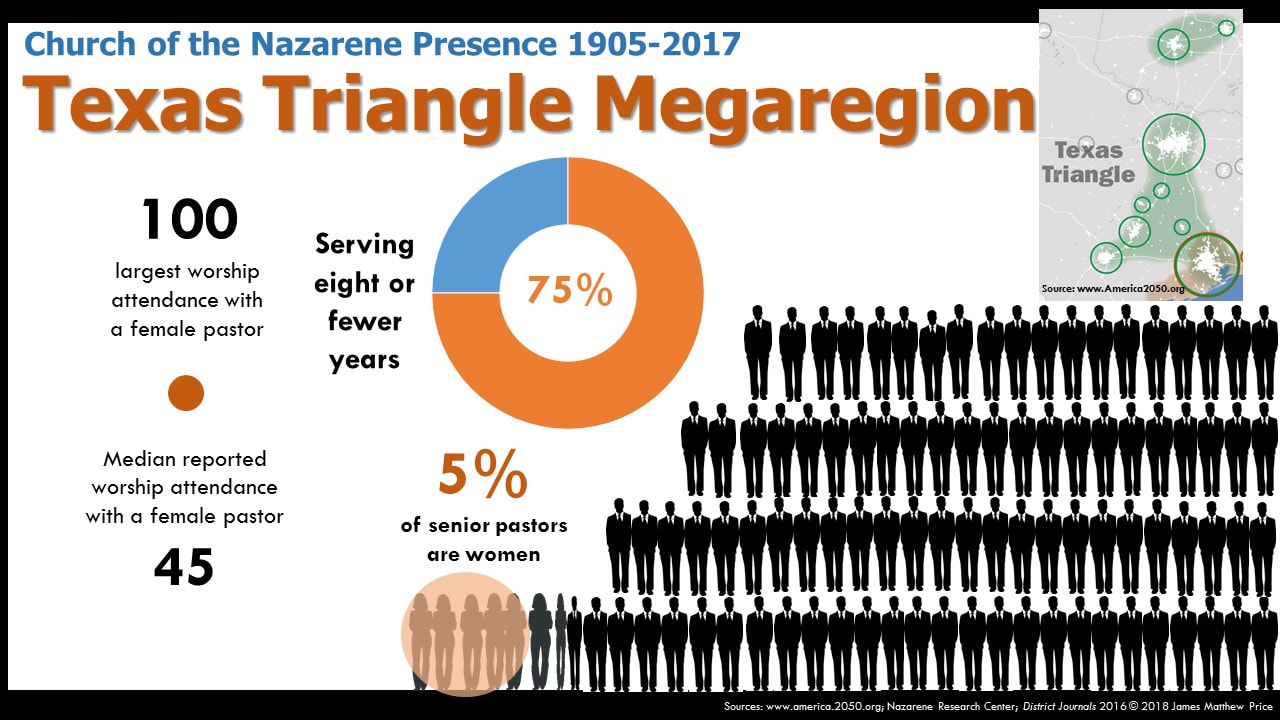
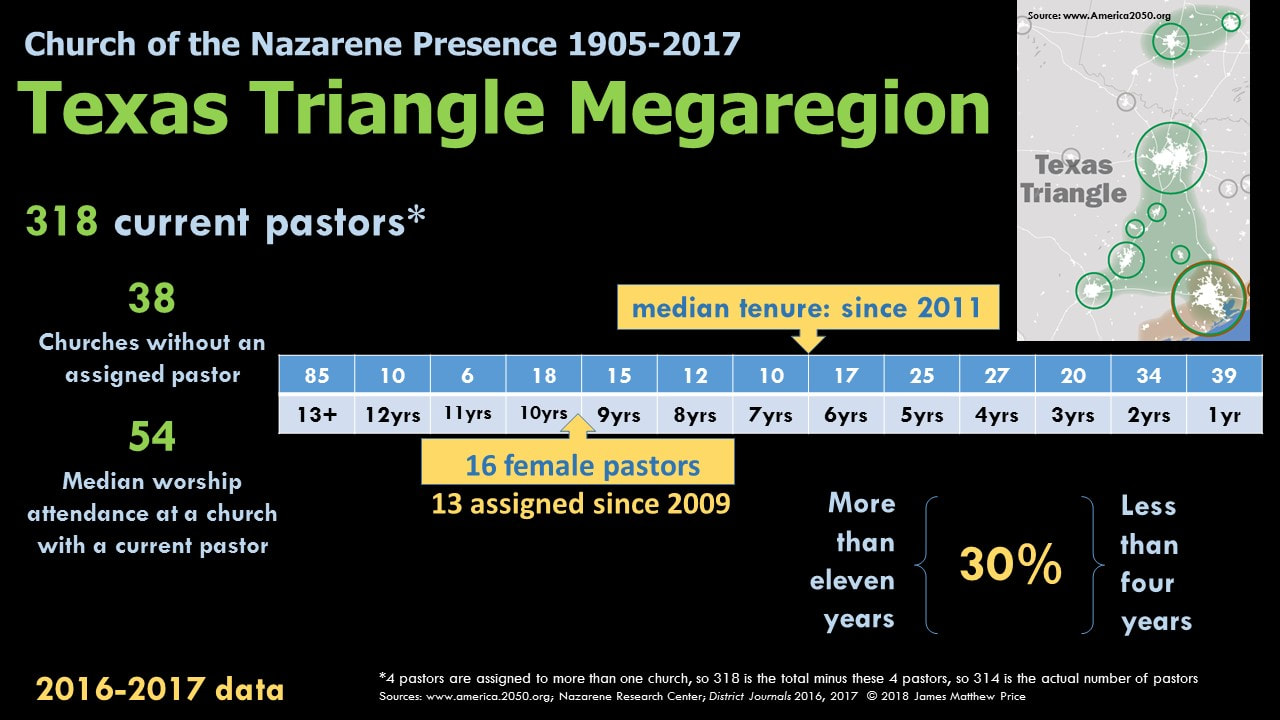
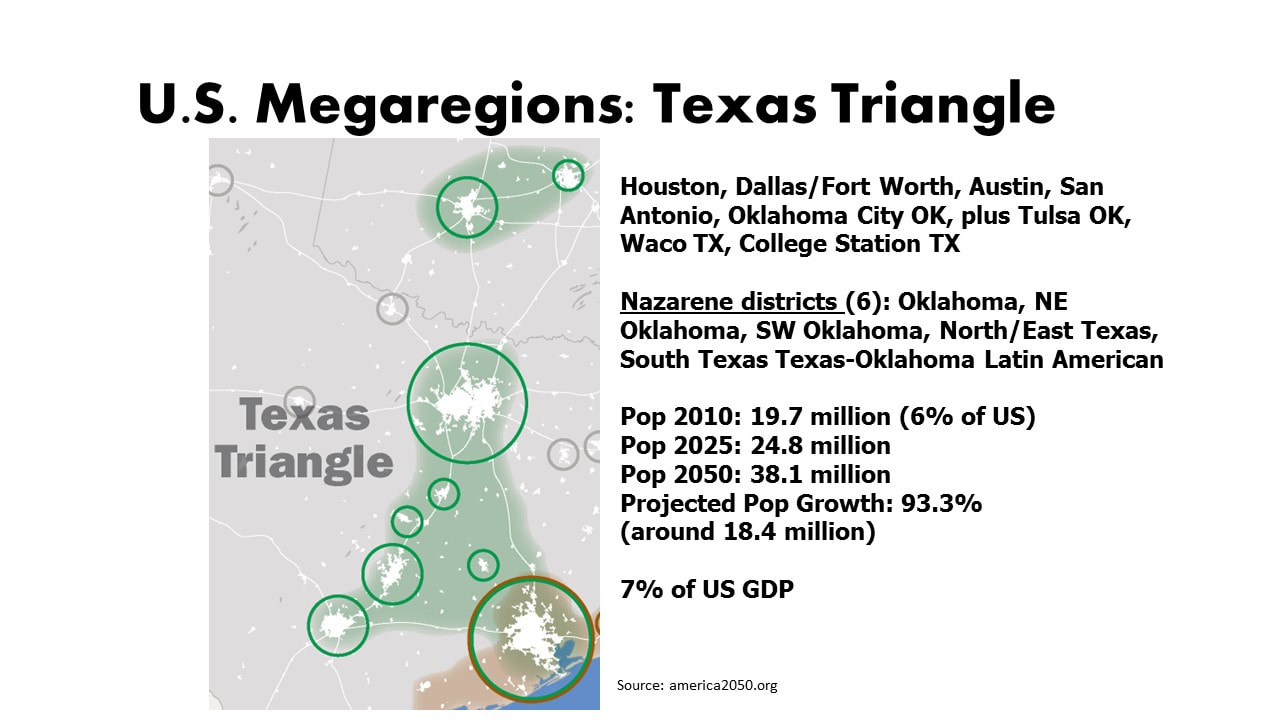
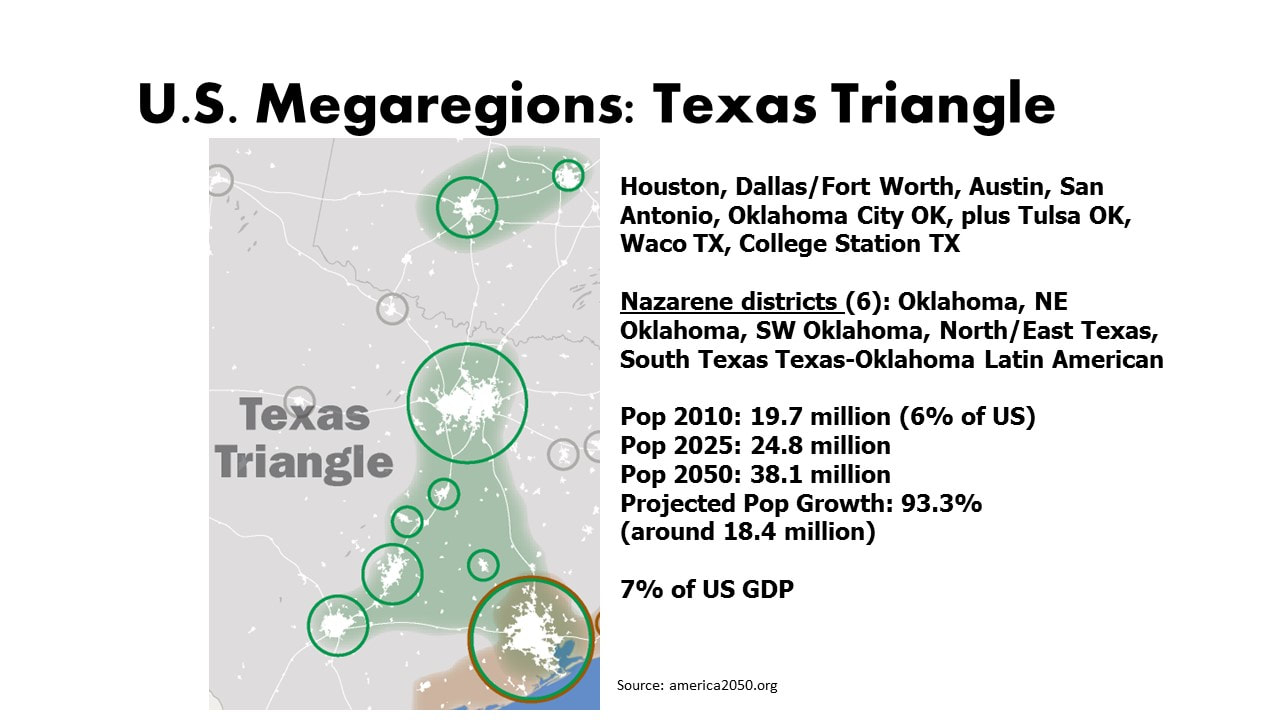
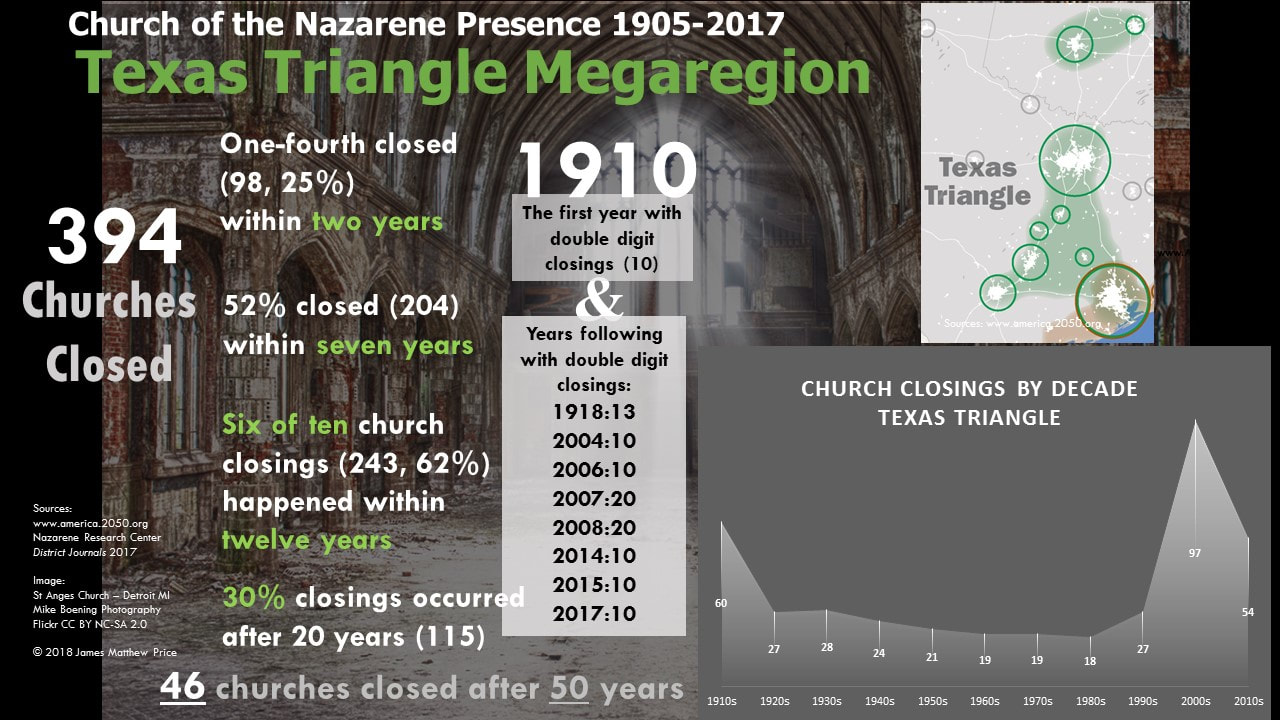

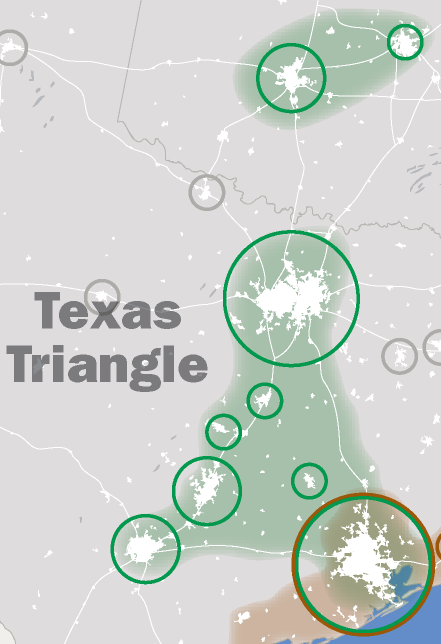
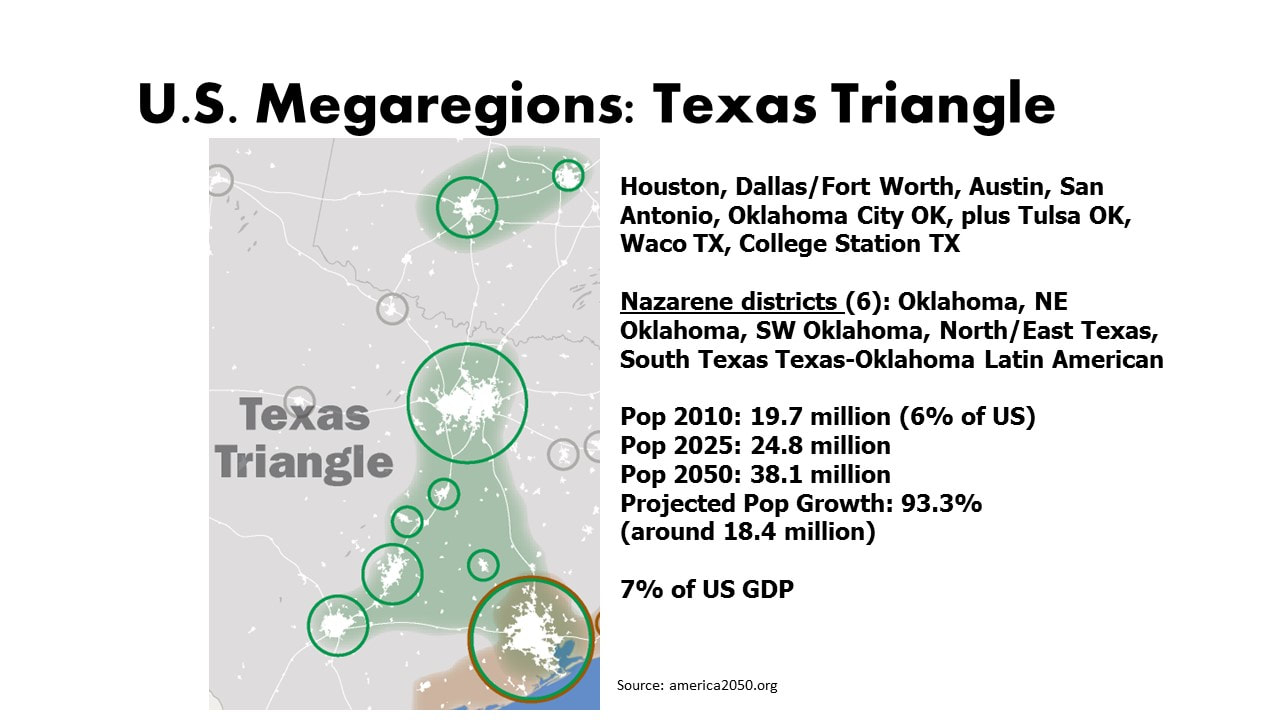
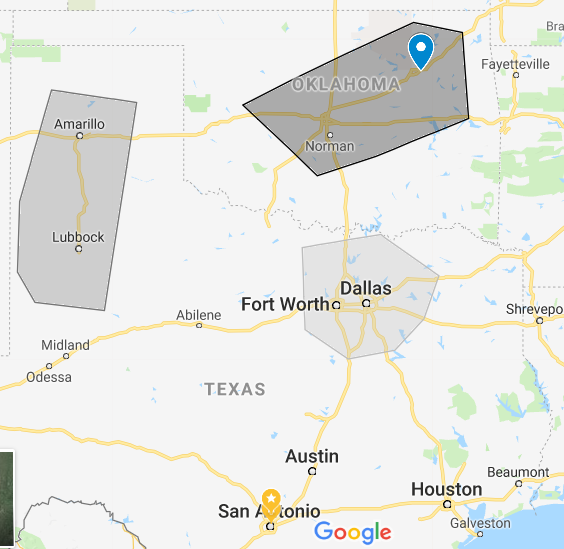




 RSS Feed
RSS Feed